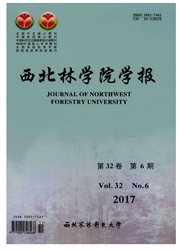

 中文摘要:
中文摘要:
采用液体培养的方法比较2种外生菌根真菌(ECMF)对重金属铅的耐受性和富集能力,并通过研究铅胁迫对其生理生化特征的影响,探讨可能存在的铅耐受性机制。结果表明,2种ECMF对铅都具有一定的耐受性和富集能力,但点柄粘盖牛肝菌的铅耐受性和富集能力明显优于草地马勃,这可能与其菌丝内铅含量较低,可溶性蛋白含量和抗氧化酶活性较高,以及苹果酸、酒石酸和琥珀酸等有机酸含量较高直接相关。推测2种ECMF的铅耐受性机制可能如下:1)阻止或减少Pb2+进入菌丝内;2)通过可溶性蛋白螯合进入菌丝细胞内的Pb2+;3)提高抗氧酶活性以清除铅胁迫产生的活性氧;4)通过分泌小分子有机酸螯合Pb2+,尤其是苹果酸、酒石酸和琥珀酸等。本研究可为探讨ECMF的重金属耐受性机制和筛选优良的重金属抗性菌株奠定基础,并为ECMF在重金属污染土壤治理和污染区植被修复中的应用提供理论依据。
 英文摘要:
英文摘要:
The lead (Pb) tolerance and enrichment ability of two ectomycorrhizal fungi (ECMF), namely Suillus granulatus and Lycoperdon pretense were compared with the liquid culture method. Through stud- ying the effects of lead stress on physiological and biochemical characteristics of the fungi, the possible mechanisms of lead tolerance were analyzed and discussed. The results showed that both two ECMF had lead tolerance and accumulation ability,but S. granulatus exhibited higher lead tolerance and accumulation ability than L. pretense, which may be directly related to its lower lead concentration, and higher soluble protein content and antioxidant enzyme activity in the mycelia,as well as higher organic acid content in liq- uid culture medium,such as malic acid, tartaric acid, and succinic acid. The possible lead tolerance mecha- nisms of two ECMF were listed as follows. 1) to prevent or reduce Pb2+ into the mycelium; 2) to chelate intracellular Pb2+ through soluble protein; 3) to remove the reactive oxygen produced by lead stress through antioxidant enzymes; 4) to chelate Pb2+ through the small molecule organic acids,especially malic acid,tartaric acid and succinic acid, etc. This study could provide the foundations for the investigation of heavy metal tolerance mechanism of ECMF and for screening of excellent heavy metal tolerant fungi. More- over,this study also could provide the theory basis for the application of ECMF in the heavy metal pollu- tion control and vegetation restoration of pollution area.
 同期刊论文项目
同期刊论文项目
 同项目期刊论文
同项目期刊论文
 期刊信息
期刊信息
